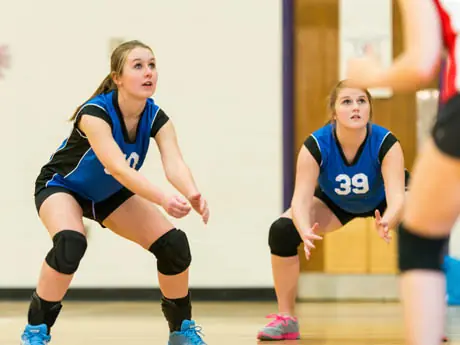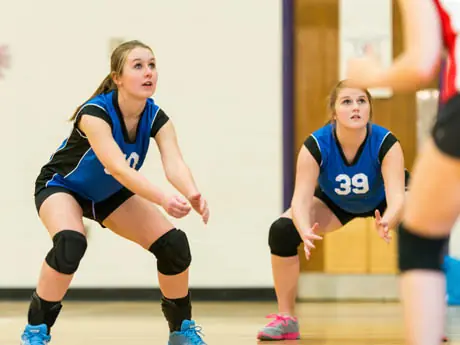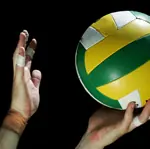
Thinking of switching surfaces this summer? If volleyball is your game, try changing your environment while still playing a sport you love.
Before you trade in the hard court for the hot sand, here are four things to keep in mind as you transition from indoor volleyball to the beach.
Beach Volleyball Beginner Tip #1: Court Sizes
Court sizes for indoor and beach volleyball are very different. Indoor courts are 18m x 9m, with a parallel attack line that is 3m from the center line. Back row players must stay behind this line when hitting the ball.
Beach courts are smaller--16m x 8m and there is no attack line. A player may hit the ball from anywhere on their side of the net. If you wonder why the beach court is smaller, try a quick lateral sprint through the sand and see how much speed (and breath) you lose. A smaller court ensures that the ball will stay live longer and rallies will be more entertaining.
Beach Volleyball Beginner Tip #2: Balls
Indoor volleyballs are made of leather and are heavier than outdoor balls. Indoor volleyball is a game of power and the heavier balls move quicker and can be hit harder.
Beach volleyballs are softer, lighter and a bit bigger than indoor balls. The lighter weight allows them to float more in the air, allowing good players to use the weather to their advantage.
If you want get serious, or at least look serious when you're playing, buy the yellow-and-white-striped Wilson beach volleyball. This is the official ball of the Association of Volleyball Professionals (AVP -- aka the pro beach circuit).
These balls are not cheap. They typically run $50, but if you're lucky you can find them for $30-40. Any ball that is less than $30, is painted with plumeria flowers or glows with fluorescent coloring, is a knock-off.
Beach Volleyball Beginner Tip #3: Players Per Side
Indoor volleyball is played with six per side. Each person has a specialized position and there are complex rotations and switches going on throughout games to ensure that each person remains in their designated position.
Beach volleyball is typically played with doubles. There are no specialized positions, only a left and a right side. Most beach players are well-rounded and can hit, dig and block.
At the higher levels, one player is dedicated to blocking and one to digging, but if you're just learning, grab a side and share the responsibilities. If you want to be taken seriously, don't play with more than two per side. Packing as many friends as possible on the court and blasting Lady Gaga from your boom box on the sideline are dead giveaways that you're just out for fun rather than skill development.
Beach Volleyball Beginner Tip #4: Scoring
With indoor volleyball, a match consists of five sets, or games. The first team to reach 25 points wins the set. Three sets wins the match, and the fifth tiebreaker set, if necessary, is only played to 15 points. Teams switch sides after every game. In beach volleyball, a match consists of a series of best-of-three game, with each game played to 21 points. Two sets wins the match, and the third tiebreaker set, if necessary, is also played to 15 points.
In both indoor and outdoor volleyball, you must win by two points. Another similarity is both games use rally scoring, meaning you do not have to serve the ball to win the point. The team that wins the rally, wins the point.
Are you ready? Those are the basics, so now it's time to get out of the gym and into the sun. Challenge yourself and try a new twist on an old favorite.
 See more volleyball drills or find volleyball leagues near you.
See more volleyball drills or find volleyball leagues near you.
Shannon Fiack played intercollegiate volleyball at the University of California, Davis. She has been living in San Diego for the past 6 years and frequently plays beach volleyball in the southern California area.








Discuss This Article